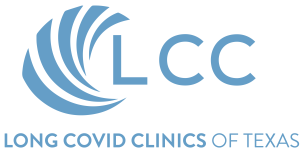You probably go to the gym after a long day, as millions of others do. But during the middle of your regular weightlifting routine, you suddenly have a terrible shoulder muscular spasm.
You have a million thoughts running through your head as you treat the hurting spot. You also wish for a sling or a brace for support.
Patients seeking treatment usually consult us at LongcovidClinics, where our expert therapists build a program to cater to your needs. While we recognize that physical therapy may not be ideal for everyone, we are devoted to helping you find the best treatment.
What is physiotherapy, and who are these professionals? This article provides answers to these questions and many more. It helps you determine whether or not physical therapy is successful. Let’s discuss why physical therapy is beneficial in the next section.

Why Need Physical Therapy?
Physical therapy includes exercises, massages, and other therapies that rely on the patient’s body as a stimulus (e.g., heat, cold, electrical currents, or ultrasound). The objectives of physical therapy are pain alleviation, enhanced mobility, and muscle strengthening.
Another important goal is educating individuals on how to assume responsibility for their health. You should also continue home treatments besides clinics and hospitals.
Physical therapy is a healthcare profession that aims to help individuals improve their physical movement and manage their pain. It can be used to treat a wide range of conditions, including sports injuries, arthritis, stroke, and spinal cord injuries. Some of the benefits of physical therapy include: improving mobility, reducing pain and swelling, increasing strength and flexibility, and improving balance and coordination.
Physical therapy can be used as a standalone treatment or in conjunction with other medical treatments, such as surgery or medications. It is generally considered a safe and effective treatment option with few side effects. In addition to these benefits of physical therapy in covid can also help individuals improve their overall quality of life and achieve their personal goals.
Components of Physiotherapy
Therapies are based on physical stimuli, such as heat, cold, electrical currents, or ultrasound, and exercises in which you actively perform certain movements. These techniques are utilized for treating acute and chronic illnesses and rehabilitation, recuperating from lengthy hospital stays, surgery, or trauma.
Physical therapy relies mostly on exercises that induce certain motions from the patient. These exercises improve mobility (the capacity to move), coordination, and muscular strength. The physical therapist instructs you on how to conduct the exercises.
These exercises are typically taught during physical therapy sessions. However, physical therapy beneficial if you continuously practice the workouts. Besides the exercises, physical therapy also aims to increase patients’ normal activity levels.
Physical therapy in coronavirus treatments focusing on physical stimuli include exercises, massage, and hand movements to relax muscles and connective tissues. The following are examples:
- MLD, or lymphatic drainage, is a manual procedure (massage to drain fluid from the tissues)
- Electrotherapy: Treatment using low-voltage electrical current
- Other forms of heat therapy include warm water soaks, mud packs, heat lamps, ultrasonography, and heat lamps.
- Cold-based therapy, such as cold air or cold packs.
Now let’s discuss the role of physiotherapists described below.
What’s the Role of Physiotherapists?
Professional physiotherapists are the real providers of physical therapy. Physical therapy is delivered in inpatient and outpatient settings, such as private clinics, hospitals, rehabilitation institutions, and long-term care facilities.
They are educated to diagnose and treat various diseases, disabilities, and accidents. The objective of a physical therapist is to restore a patient’s mobility and independence while minimizing the risk of further sickness or damage.
The role of a physical therapist encompasses the entire healing process, from the initial diagnosis to subsequent restorative and preventative treatments. Physical therapy can function independently or in conjunction with other forms of care and involves more than manual manipulation. Let’s discuss why physiotherapy is unique, described in detail below.
Why is Physiotherapy Unique?
Physical therapy can alleviate pain, improve mobility, and promote healthy posture, among many other benefits.
Personal trainers may also concentrate on fixing specific issues, such as postural errors and muscle weakness. It is an opportunity to obtain a deeper understanding of your body and identify movement patterns that may have led to your injury.
- Creating a rapport with one’s therapist is a unique characteristic of physical therapy. Physical therapists (PTs) arguably spend the most time one-on-one with patients of all medical practitioners.
- Physical therapy professionals have significant training and expertise in efficient rehabilitation techniques. They work closely with the referring physician to learn about the patient’s medical history, surgical procedure, and treatment goals to build personalized recovery plans.
Usually, a ruptured ACL might cause athletes to rethink their continued sports participation. Those who encounter mobility challenges can’t engage in the most enjoyable activities.
For this reason, physiotherapy is the best alternative to other treatments. Let’s discuss it below.
Is Physiotherapy the Best Alternative?
Physiotherapy is safe and has few adverse side effects, making it an excellent treatment for various conditions. Anyone seeking therapy for injuries or chronic pain should consider it. Physical therapy is of significant help to individuals with various injuries, disabilities, and other health issues.
Physical therapy helps improve people’s lives by promoting easier movements and helps you understand the scientific basis for the efficacy of physih3cal therapy. It is based on the principle that each individual’s physical and mental capacities are unique. Its objective is to help individuals regain mobility and independence to return to living their lifestyles.
Wrapping Up!
Physiotherapy is good if you consult a skilled and professional physiotherapist. If you are looking for a good physiotherapist around you, visit LongcovidClinics for better services and assistance.







